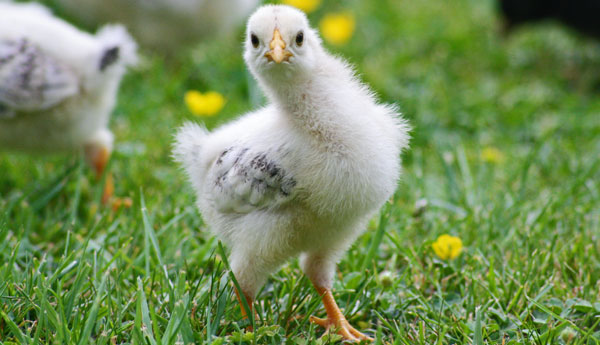
So you’ve got hens, a rooster, and not enough chickens. Should you order more chicks in the mail? Sure, that’s one solution. But if you’ve got all three of the above, its turns out nature has a free solution for you. Read on for a how-to on hatching your own chicks.
Step 1: Feed
The first thing you’ll need is … well … some eggs! Set aside a few eggs you want to hatch in a layer box. Provided you have an active rooster, all or most should be fertile. As some will inevitably be roosters, if you’re hatching chicks for egg production, it is often wise to set aside at least a quarter more eggs than the number of chickens you eventually want. Label all eggs with a sharpie so you don’t end up mixing them up with fresh eggs for the kitchen. (Depending on how far along the embryo is, this can be a disturbing experience …)
Step 2: Brooder Hen
Almost as important as eggs, you’ll need a brooding hen to hatch your chicks (at least without the use of an incubator). Watch for a hen who sits all day on a clutch of eggs, and resists (sometimes violently) being removed. It is under her that you should deposit your eggs for care. As a brooding mother will barely leave the nest, make sure to leave some feed and water within pecking distance. Her sit will be a long one–much longer than you could probably go without food, and certainly without water. Heritage breeds like Buff Orphingtons, Sussex, Silkies and Langshans tend to take to brooding the quickest.
Step 4: Wait
That’s right, for step four, patience is all that’s required. While in an incubator you need to turn the eggs, when you have a brooding hen, she will not only turn them for you, but will even cycle different eggs to the middle to achieve maximum warmth. In fact, these are the only times she will leave her seated position on top of the eggs. For chicken eggs, hatching generally takes around 21 days. Start listening for peeping around day 18 though, just in case you have some early escapees. While it’s okay to help the chick once it begins cracking its way out of the shell, never attempt to crack an egg just because you hear peeping from within.
Step 5: Caring for Your Chicks
Once the chicks have broken their way out of the eggs, it’s important to give them a healthy start. Provide them with a starter feed composed of 20-percent protein, and provide them with a nearby source of clean water. Sometimes it even helps to dip their beaks in the water, so they get the idea what to do. Yes, they will instinctively figure it out eventually, but a helping hand never hurt. Also check their rear vents. Sometimes runny feces can clog them, which will lead to complications if not cleaned away. Simply wet a rag and wipe it off for them, if this occurs.
Follow the steps above, and you should have a healthy young brood in no time. Happy hatching!
A humble homesteader based in an undisclosed location, Lars Drecker splits his time between tending his little slice of self-sustaining heaven, and bothering his neighbors to do his work for him. This is mainly the fault of a debilitating predilection for fishing, hunting, camping and all other things outdoors. When not engaged in any of the above activities, you can normally find him broken down on the side of the road, in some piece of junk he just “fixed-up.”

Jesse Mathewson says
Nature is a cruel mistress, for those who free range their chickens, allow the roosters to stick- survival is truly the best way to ensure stronger flocks! That said, eating them is a great alternative and as always, they to make sure they like you or see you as their source of food and safety- I use a coop and lock em up every night, by keeping new chickens in an enclosed section of this and checking daily for issues – you maintain a good flock of healthy and happy birds.
So many things can and do occur, bobcats and yotes are absolutely opportunists, though for us in Southern Arizona, bobcats are a winter threat. Hawks for the younger birds and so on.
If they are being hunted daily, they will need your intercession, so maintain awareness. I love using goats to supplement and help maintain secure health for them. This is in addition to my dogs which have been trained to protect and not harm these birds and animals.
Dora Nagle says
As a reminder not all hatched chicks will be female. If you don’t want to be overloaded will roster you will need to cull them and or eat them. Too many rooster will get very aggressive if there isn’t a good ratio of hens to roosters. I have had them kill each other even though the less dominant rooster tries to escape. My chickens free range during the day every day until the last goes in the coop at night. We do lose some to hawks,fox and raccoons and this is the main reason we lock them down at night, hawks during the day we can’t control..